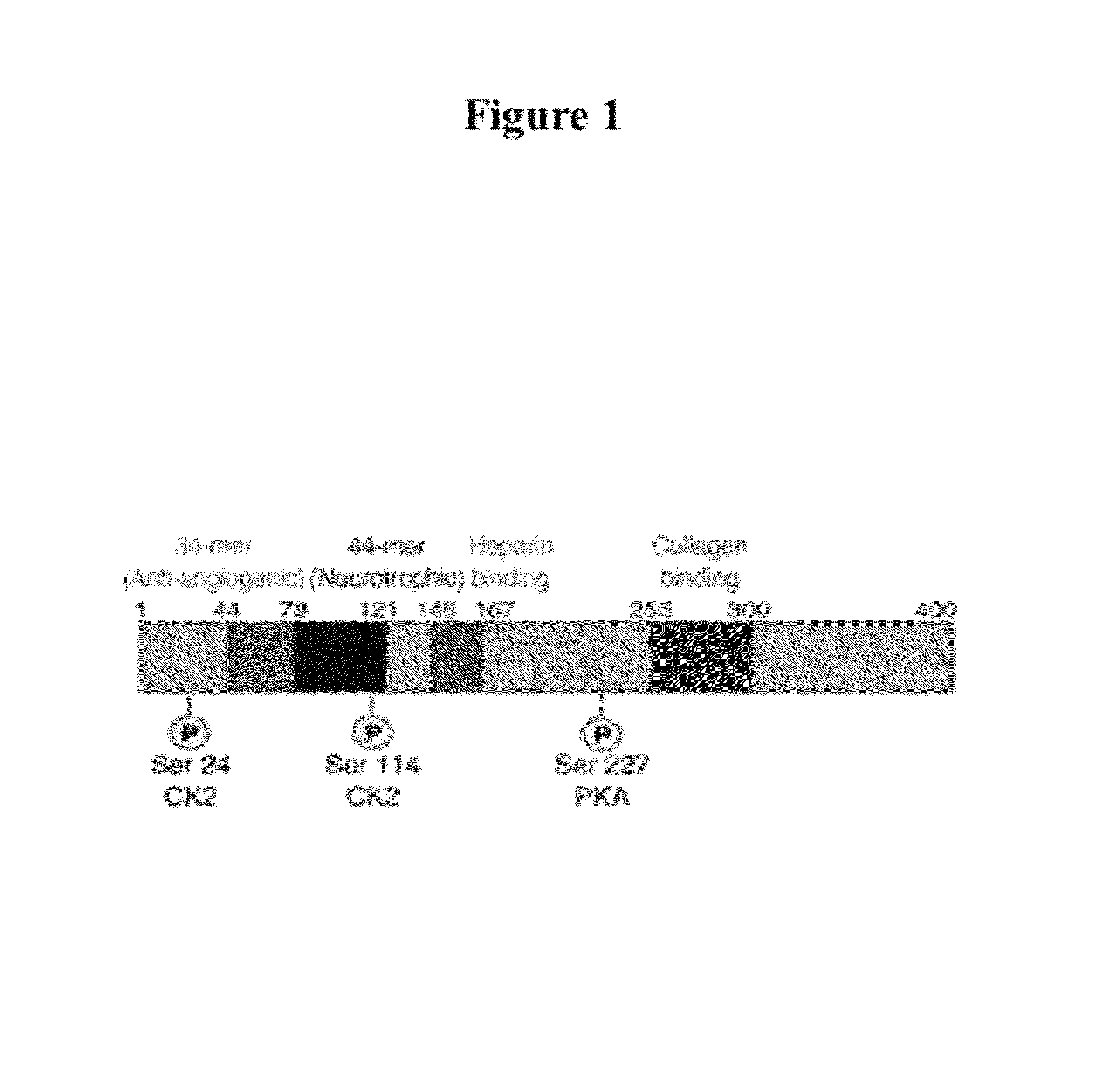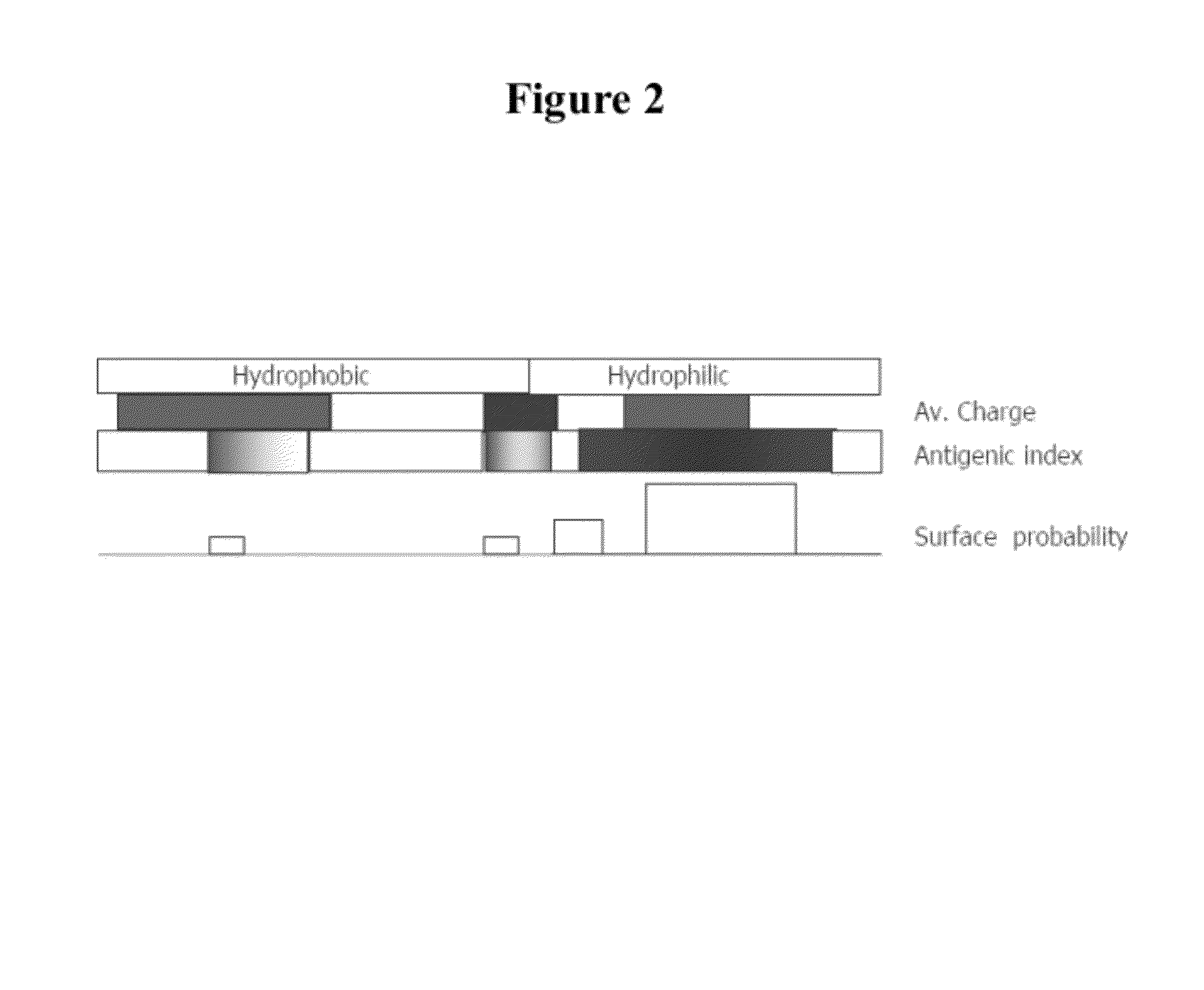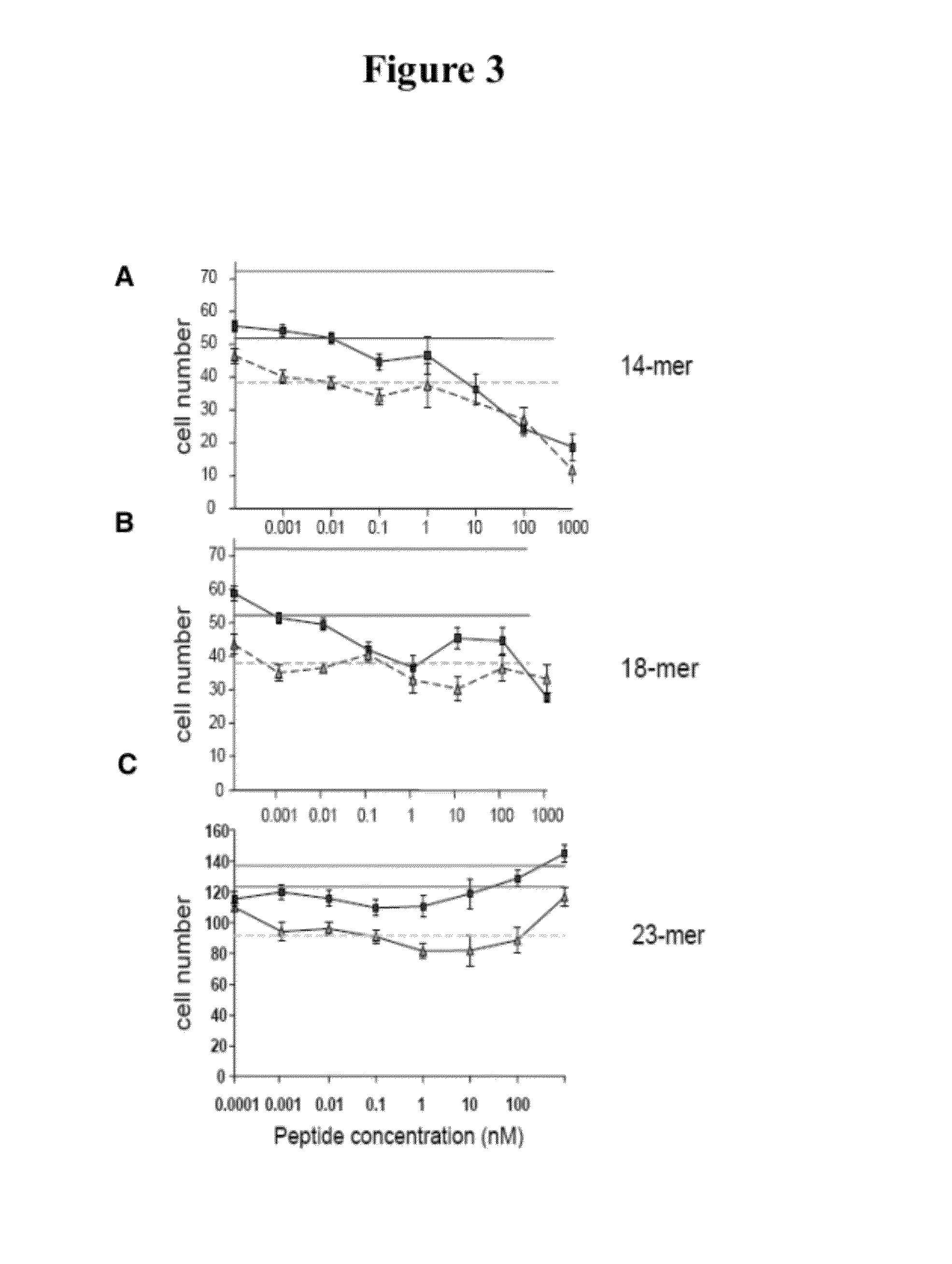Methods and compositions for inhibiting angiogenesis
a technology of angiogenesis and composition, applied in the direction of endopeptidase, peptide/protein ingredients, angiogenin, etc., can solve the problem that the target of vegf for human cancer therapy has not been successful in a multiplicity of other tumor types
- Summary
- Abstract
- Description
- Claims
- Application Information
AI Technical Summary
Benefits of technology
Problems solved by technology
Method used
Image
Examples
example 1
[0149]This example describes the mapping of a 34-mer peptide of PEDF and the identification of a shorter fragment, the 18-mer, with superior anti-angiogenic characteristics. FIG. 1 shows a schematic representation of identified functional domains of PEDF, including major phosphorylation sites and domains known to be critical for interactions with extracellular matrix. The analysis of the 34-mer structure was performed using Protean software and its hydrophilic profile, antigenic indices and probability of surface exposure were determined. This analysis yielded several candidate peptides to be tested in the in vitro and in vivo angiogenesis assays (FIG. 2).
[0150]The C-terminal part of 34-mer is more hydrophilic, with a highly charged area in the middle and high antigenic index and thus is likely to be involved in the interaction with the putative receptor. Three peptides were identified that cover this area as shown in FIG. 2: a shorter 14-amino acid peptide that covers positively ch...
example 2
P18 Suppresses the Growth of Renal Cell Carcinoma and Metastases in Orthtopic Xenigraft Model and Cooperates with Rapamycin
[0156]Mouse renal carcinoma cells (Renca, ATCC) were injected under the kidney capsule (0.5×106 / site). Animals were randomly divided into 6 groups (8 per group) and the treatment started 5 days after inoculation (intraperitoneal injections). The following treatment groups were included: P18 (SEQ ID NO:2; 10 mg / kg); P18 (60 mg / kg); Rapamycin (R, 0.5 mg / kg); R+P18 (10 mg / kg) and R+P18 (60 mg / kg). The control group was treated with scrambled peptide, YFNGRSSPSNTNTYYVDRL (SEQ ID NO:51). After 17 days of treatment both kidneys were removed. To assess tumor growth, the weight of healthy kidney was subtracted from the weight of tumor-inoculated kidney, for each animal. The difference represents the weight of the tumor. Average difference with SD meanings per group is shown in FIG. 8. Note significant (P<0.0003) decrease in tumor weight in P18-treated animals. Also note...
PUM
| Property | Measurement | Unit |
|---|---|---|
| turnover time | aaaaa | aaaaa |
| diameter | aaaaa | aaaaa |
| concentrations | aaaaa | aaaaa |
Abstract
Description
Claims
Application Information
 Login to View More
Login to View More - R&D
- Intellectual Property
- Life Sciences
- Materials
- Tech Scout
- Unparalleled Data Quality
- Higher Quality Content
- 60% Fewer Hallucinations
Browse by: Latest US Patents, China's latest patents, Technical Efficacy Thesaurus, Application Domain, Technology Topic, Popular Technical Reports.
© 2025 PatSnap. All rights reserved.Legal|Privacy policy|Modern Slavery Act Transparency Statement|Sitemap|About US| Contact US: help@patsnap.com



